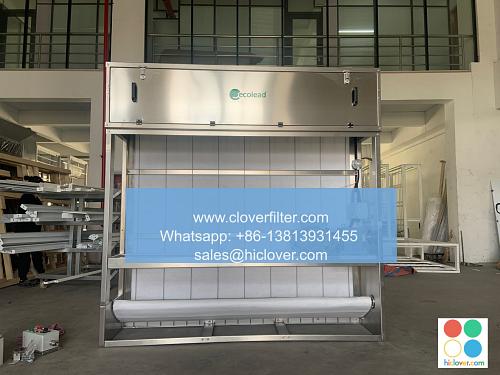Nanofiber Technology in Air Filter Production

The increasing concern about air pollution and its impact on human health has led to a growing demand for efficient air filtration systems.
Nanofiber technology
has emerged as a game-changer in air filter production, offering unprecedented benefits in terms of filtration efficiency, energy savings, and cost-effectiveness. In this article, we will delve into the world of nanofiber technology and explore its applications in air filter production, highlighting various
application areas
and
key benefits
.
What are Nanofibers?
Nanofibers are ultra-fine fibers with diameters in the range of 1-100 nanometers. These microscopic fibers are produced through various techniques, including electrospinning and melt blown processes. The unique properties of nanofibers, such as their high surface area-to-volume ratio and small pore size, make them ideal for air filtration applications.
Advantages of Nanofiber Technology in Air Filter Production
The incorporation of nanofiber technology in air filter production offers several advantages, including:
* Improved filtration efficiency: Nanofibers can capture ultra-fine particles and nanoparticles with high accuracy, making them ideal for applications where high-efficiency particulate air (HEPA) filtration is required.
* Reduced energy consumption: Nanofiber-based air filters can operate at lower pressure drops, resulting in significant energy savings and reduced carbon footprint.
* Increased durability: Nanofiber air filters are more resistant to tear and wear, reducing the need for frequent replacements and minimizing waste.
Application Areas of Nanofiber Technology in Air Filter Production
Nanofiber technology has a wide range of applications in air filter production, including:
*
HVAC systems
: Nanofiber-based air filters can be used in heating, ventilation, and air conditioning (HVAC) systems to improve indoor air quality and reduce energy consumption.
*
Industrial air filtration
: Nanofiber technology can be applied in industrial air filtration systems to capture harmful pollutants and particulate matter in various industries, such as manufacturing and pharmaceuticals.
*
Automotive air filtration
: Nanofiber-based air filters can be used in automotive air filtration systems to improve in-cabin air quality and reduce emissions.
*
Medical air filtration
: Nanofiber technology can be applied in medical air filtration systems to capture airborne pathogens and contaminants in hospitals and healthcare facilities.
Conclusion
In conclusion, nanofiber technology has revolutionized the air filter production industry, offering unparalleled benefits in terms of filtration efficiency, energy savings, and cost-effectiveness. With its wide range of applications in HVAC systems, industrial air filtration, automotive air filtration, and medical air filtration, nanofiber technology is poised to play a critical role in improving air quality and reducing pollution worldwide. As research and development continue to advance, we can expect to see even more innovative applications of nanofiber technology in the future. It looks like you’re ready to get started, but I don’t see a specific prompt. Could you please provide more context or clarify what you would like to talk about or ask? I’m here to help with any questions or topics you’d like to discuss!


